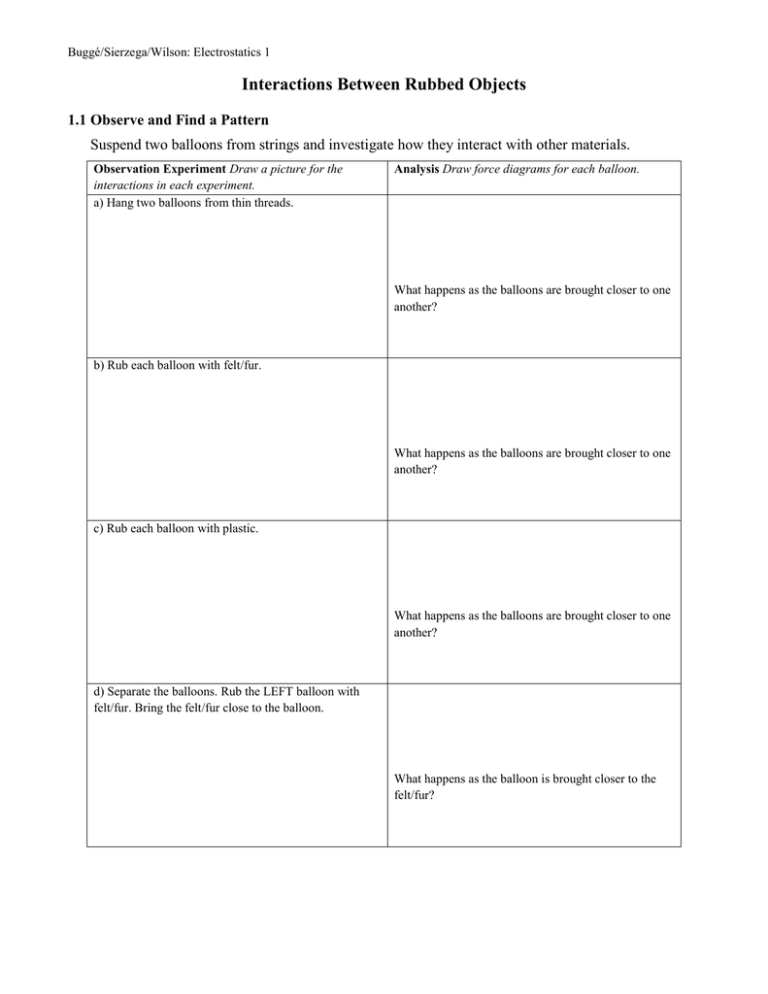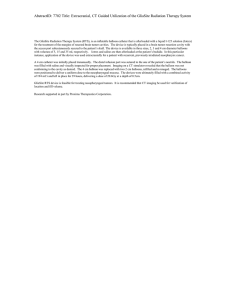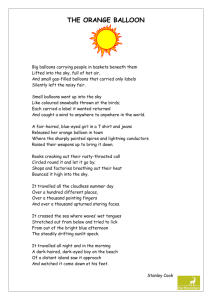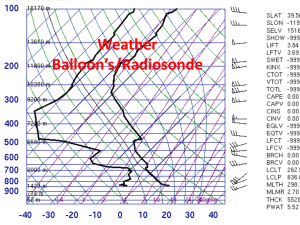Interactions Between Rubbed Objects
advertisement

Buggé/Sierzega/Wilson: Electrostatics 1 Interactions Between Rubbed Objects 1.1 Observe and Find a Pattern Suspend two balloons from strings and investigate how they interact with other materials. Observation Experiment Draw a picture for the interactions in each experiment. a) Hang two balloons from thin threads. Analysis Draw force diagrams for each balloon. What happens as the balloons are brought closer to one another? b) Rub each balloon with felt/fur. What happens as the balloons are brought closer to one another? c) Rub each balloon with plastic. What happens as the balloons are brought closer to one another? d) Separate the balloons. Rub the LEFT balloon with felt/fur. Bring the felt/fur close to the balloon. What happens as the balloon is brought closer to the felt/fur? Buggé/Sierzega/Wilson: Electrostatics 1 e) Rub the RIGHT balloon with plastic. Bring the plastic close to the balloon. What happens as the balloon is brought closer to the plastic? f) Bring the balloons near each other. What happens as the balloons are brought closer to one another? g. Identify patterns in these observations. Devise a possible explanation for the observed behavior. 1.2 Test Your Idea Assemble two long pieces of nylon (stockings work fine) and a plastic grocery bag. a) Design an experiment to test whether the patterns you found in the previous activity work for the interactions of nylon and the plastic bag. Describe the experimental design. b) Predict the outcome of your experiment based on the pattern. Buggé/Sierzega/Wilson: Electrostatics 1 c) Perform the experiment and then describe the outcome. d) Make a judgment about your pattern. Did You Know? The phenomena you investigated in this activity are called “electrical phenomena”; they were first observed when people noticed that objects made of amber attracted or repelled other rubbed objects, similar to the way the tubes interacted in your experiments. The Greek word for amber is “electron”, thus the phenomena were called electric phenomena. 1.3 Hypothesize In the first two activities you found a consistent pattern: Identical objects rubbed with a second material repel each other. The second material in turn attracts the objects it rubbed. Think of a mechanism that might explain why rubbing objects makes them attract or repel each other. Need Some Help? Definition of mechanism: the structure or arrangement of parts of a system or a process working together to produce an observed effect. Example: A pen was on the table and then disappeared. A possible mechanism explaining the disappearance would be that James took it. Buggé/Sierzega/Wilson: Electrostatics 1 1.4 Design an Experiment You have two balloons and felt/fur. Design an experiment to investigate what factors affect the strength of the electric force that the two balloons exert on each other. 1.5 Explain Your clothing tends to cling together after going through the dryer. How might this occur in the dryer? Is your answer consistent with what you observed in class? Explain and represent your answer with a picture. 1.6 Explain Experiment with materials that you have at home to establish which ones participate in electric interactions. Try to find the objects that attract each other and the objects that repel each other. Make a list below.



